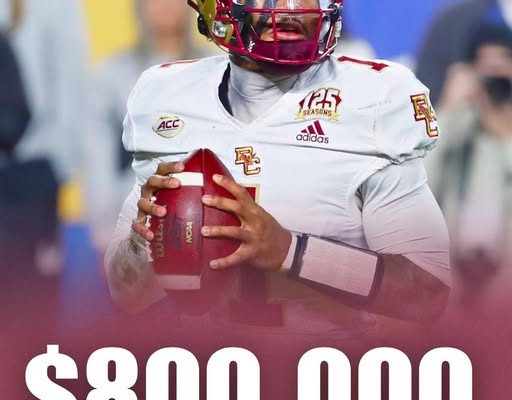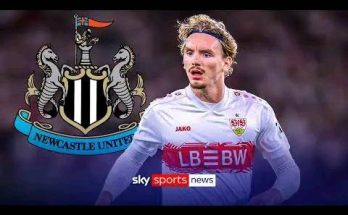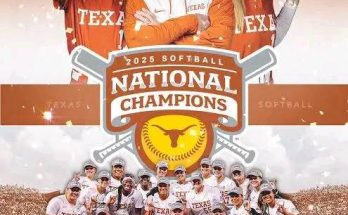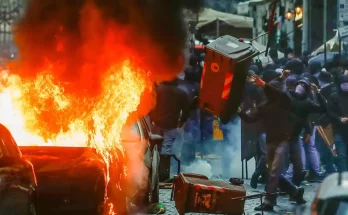In an era where college athletics has undergone a seismic shift thanks to the NCAA’s revised Name, Image, and Likeness (NIL) policies, the financial realities for top-tier athletes have changed dramatically. No longer bound by outdated amateurism standards, players can now cash in on their marketability, and few embody this evolution better than Florida State’s rising star quarterback, Brock Glenn Castellanos. According to Pete Nakos of On3, Castellanos is projected to earn over $800,000 through his NIL agreements tied to his status as the face of Florida State football. This figure not only illustrates the power of branding in today’s college sports environment but also speaks volumes about the expectations surrounding Castellanos as he prepares to lead the Seminoles into what could be a defining season.
While $800,000 might sound staggering to traditionalists, it reflects the going rate for quarterbacks at elite programs who are seen as program-changers and media magnets. For Castellanos, the money isn’t just a windfall—it’s recognition. It’s a validation of his athletic potential, public appeal, and the belief that he can elevate Florida State to national prominence. It’s also a strategic investment by companies and collectives who understand the power of aligning with a player poised for national visibility. This new collegiate ecosystem has transformed quarterbacks like Castellanos into not only athletes but full-blown brands before they’ve even taken a snap in the NFL.
Florida State’s ascent back to national relevance has played a significant role in Castellanos’ booming valuation. Once a perennial powerhouse, the Seminoles have spent recent years trying to reclaim their throne atop the ACC and the college football landscape. Castellanos, a dynamic dual-threat quarterback with the charisma and composure of a veteran, is now positioned as the player who could finally push them over the edge. The buzz surrounding him—both as a player and a persona—has sparked a surge of commercial interest, ranging from apparel deals to regional endorsements, fan engagement platforms, and booster-backed NIL collectives. Each stream contributes to the projected $800,000 figure, which could grow depending on his on-field performance and post-season accolades.
It’s important to note that Castellanos’ NIL earnings are not just the result of raw talent, but also a testament to how carefully college athletes are now navigating the business side of sports. With agents, marketing teams, and legal advisors in tow, players like Castellanos are operating in a mini-professional environment. His camp has reportedly been deliberate in aligning him with long-term partners who reflect both his values and his potential career trajectory. That type of business savvy, rarely seen from college students just a few years ago, is now the norm for players of his stature. As a result, Castellanos isn’t just preparing for a title run—he’s laying the groundwork for generational wealth and a sustainable personal brand.
But NIL money doesn’t come without its share of pressure. For Castellanos, the price of being a six-figure athlete is not just monetary—it’s reputational. Every throw, every snap, every decision he makes on and off the field will be scrutinized through a financial lens. Critics will argue that a quarterback earning nearly a million dollars needs to deliver championships, while fans will demand consistent excellence. For a young man in his early twenties, that level of expectation could be daunting. Yet those close to Castellanos insist he’s uniquely built for this moment. Calm, mature, and intensely driven, he appears to embrace the spotlight rather than shrink from it.
There’s also a larger cultural component to this story. Castellanos’ NIL success is symbolic of how the landscape has shifted for student-athletes, particularly those from working-class or minority backgrounds. In the past, athletes like him would generate millions in revenue for universities and networks without seeing a cent in return. Now, players have a shot at real financial independence before their professional careers even begin. The ability to help their families, invest in their futures, and create personal brands means the NIL era isn’t just about money—it’s about empowerment. Castellanos’ projected earnings represent not just personal gain, but a broader victory for equity in college sports.
The Florida State fan base has certainly rallied behind Castellanos. His jersey sales are soaring, his social media presence is growing by the day, and the energy around the program has reached a fever pitch. Booster organizations, who once funneled money indirectly into facilities and coaching salaries, are now enthusiastically channeling resources toward NIL initiatives that directly benefit players like Castellanos. This grassroots support illustrates the new alignment between athlete success and fan engagement. When Castellanos shines, Florida State’s brand rises. When he’s spotlighted in national media, so is the program. The incentives are more directly tied than ever before.
Of course, the cynics haven’t gone quiet. Some argue that the NIL market is unsustainable and that paying amateur athletes large sums of money will lead to locker room divisions, short-term thinking, and a dilution of the academic mission of college athletics. But these concerns often ignore the reality that college sports have long been a billion-dollar industry built on the unpaid labor of young athletes. What Castellanos and his contemporaries are doing is simply reclaiming a slice of that pie. If anything, the NIL model adds transparency to a system that has historically operated in shadows, offering players above-board opportunities to profit from their own likeness.
Moreover, Castellanos’ NIL journey offers a template for how other college programs and athletes can strike a balance between performance, branding, and character. The importance of surrounding athletes with strong support systems—whether it’s university compliance teams, marketing advisors, or mental health professionals—has never been more clear. Florida State appears to have embraced this holistic model, ensuring that Castellanos is equipped not just to lead on Saturdays, but to thrive Monday through Friday in the high-stakes world of modern collegiate athletics.
Looking ahead, Castellanos’ story is far from finished. If he delivers on the field, the $800,000 figure could become a mere footnote in a larger narrative of national titles, Heisman campaigns, and first-round NFL Draft projections. He has all the tools—arm strength, athleticism, poise, and leadership—to become one of college football’s defining stars in the NIL era. And in doing so, he may not only change the trajectory of Florida State football but help redefine what success looks like for a new generation of student-athletes.
In the end, what Brock Glenn Castellanos represents is not just a quarterback with a hefty NIL deal, but a symbol of where college football is heading. He’s the prototype of the 21st-century student-athlete—part player, part entrepreneur, and fully in control of his own destiny. Whether he leads Florida State back to the College Football Playoff or not, his impact on the program, the NIL landscape, and the national conversation about athlete compensation is already undeniable. And if $800,000 is the starting point, the ceiling may not even be visible yet.



